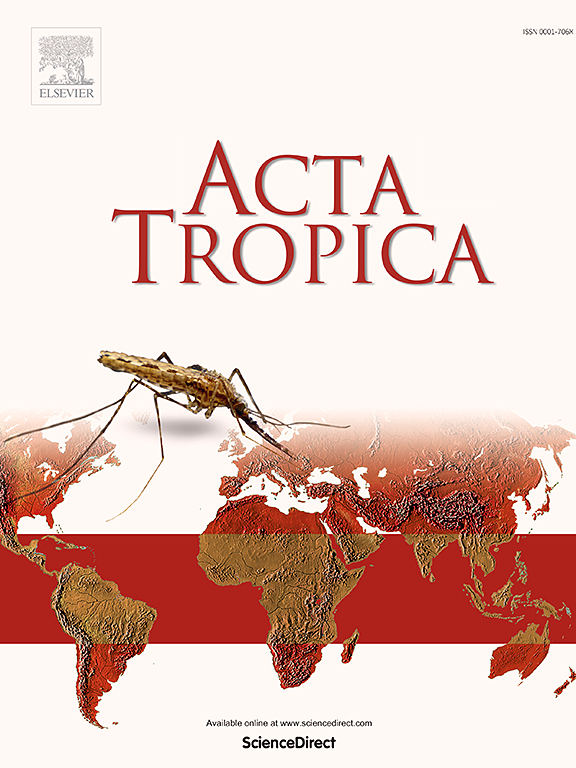Short-term effect of weather variables on West Nile virus infection in Equids in Spain: A space-time stratified case-crossover design
IF 2.1
3区 医学
Q2 PARASITOLOGY
引用次数: 0
Abstract
West Nile virus (WNV) is an arthropod-borne virus primarily transmitted by Culex mosquitoes, among birds, but occasionally infecting humans and equids. Understanding environmental factors on the disease occurrence is crucial for planning effective prevention and control strategies. Our study estimates the short-term effects of ambient temperature, relative humidity and precipitation on weekly cases of WNV in equids in Spain, using a space-time stratified case-crossover design. Because WNV transmission occurs sometime after the weather conditions become favorable for the vector, we aimed to estimate the lagged effect of the three weather variables on the incidence of WNV cases in equids. Therefore, we applied a conditional Poisson regression within the framework of lag-distributed models. These models are particularly effective for examining the delayed effects of exposures. The incidence of WNV confirmed cases was associated with temperatures registered within the prior two and eight weeks. The highest incidence was observed at lag four, where the incident rate ratio (IRR) increased to 11.96 (95 % CI: 9.84–50.40) with mean temperature at 33 °C, likewise relative humidity effect peaked also at lag four (IRR=3.99; 95 % CI: 1.43–11.16) at 93 % of relative humidity. On the other hand, the confidence intervals for precipitation were very wide, making it difficult to discern a clear change in the risk of WNV infection associated with total precipitation. This study sheds light on the complex relationships between meteorological variables and the incidence of WNV cases. Considering the zoonotic nature of the disease, these results could provide valuable information for surveillance and early warning of the disease.
天气变量对西班牙马科动物西尼罗病毒感染的短期影响:时空分层病例交叉设计
西尼罗河病毒(WNV)是一种节肢动物传播的病毒,主要由库蚊传播,在鸟类中传播,但偶尔感染人类和马科动物。了解疾病发生的环境因素对制定有效的预防和控制策略至关重要。本研究采用时空分层病例交叉设计,估计了环境温度、相对湿度和降水对西班牙马科动物每周西尼罗河病毒病例的短期影响。由于西尼罗河病毒的传播发生在天气条件对媒介有利的一段时间之后,我们的目的是估计这三个天气变量对马中西尼罗河病毒病例发病率的滞后效应。因此,我们在滞后分布模型的框架内应用了条件泊松回归。这些模型对于检查暴露的延迟效应特别有效。西尼罗河病毒确诊病例的发病率与前两周和八周内记录的温度有关。在滞后4时发病率最高,平均温度为33°C时,发病率比(IRR)增加到11.96 (95% CI: 9.84 ~ 50.40),相对湿度效应也在滞后4时达到峰值(IRR=3.99;95% CI: 1.43-11.16),相对湿度为93%。另一方面,降雨量的置信区间非常宽,因此很难辨别与总降雨量相关的西尼罗河病毒感染风险的明显变化。这项研究揭示了气象变量与西尼罗河病毒发病率之间的复杂关系。考虑到该病的人畜共患性质,这些结果可为该病的监测和早期预警提供有价值的信息。
本文章由计算机程序翻译,如有差异,请以英文原文为准。
求助全文
约1分钟内获得全文
求助全文
来源期刊

Acta tropica
医学-寄生虫学
CiteScore
5.40
自引率
11.10%
发文量
383
审稿时长
37 days
期刊介绍:
Acta Tropica, is an international journal on infectious diseases that covers public health sciences and biomedical research with particular emphasis on topics relevant to human and animal health in the tropics and the subtropics.
 求助内容:
求助内容: 应助结果提醒方式:
应助结果提醒方式:


